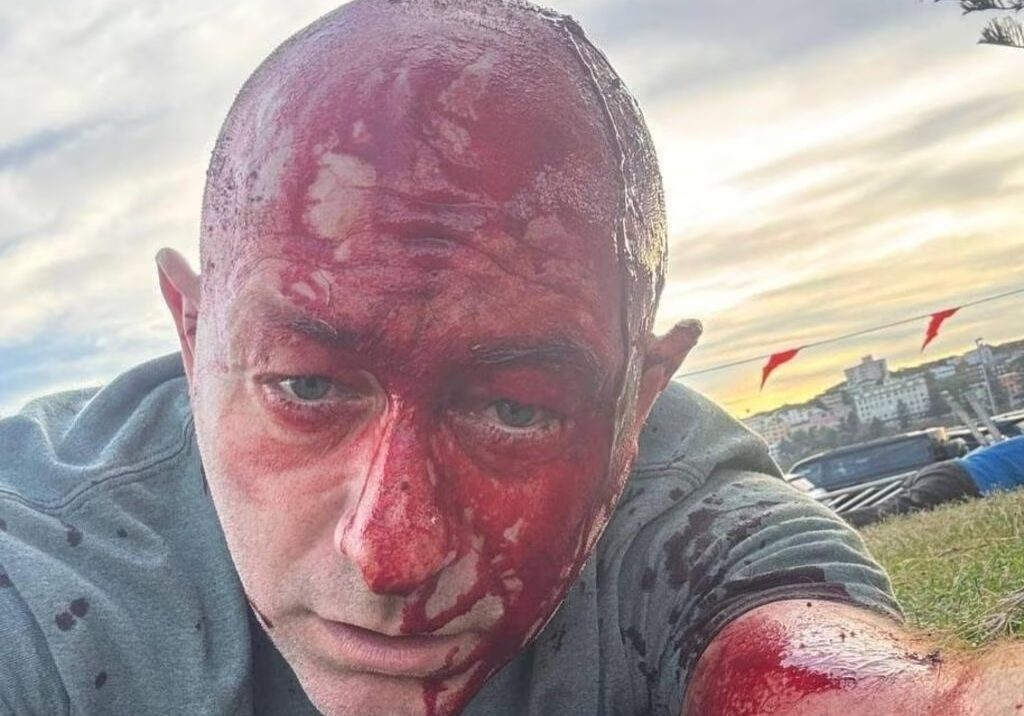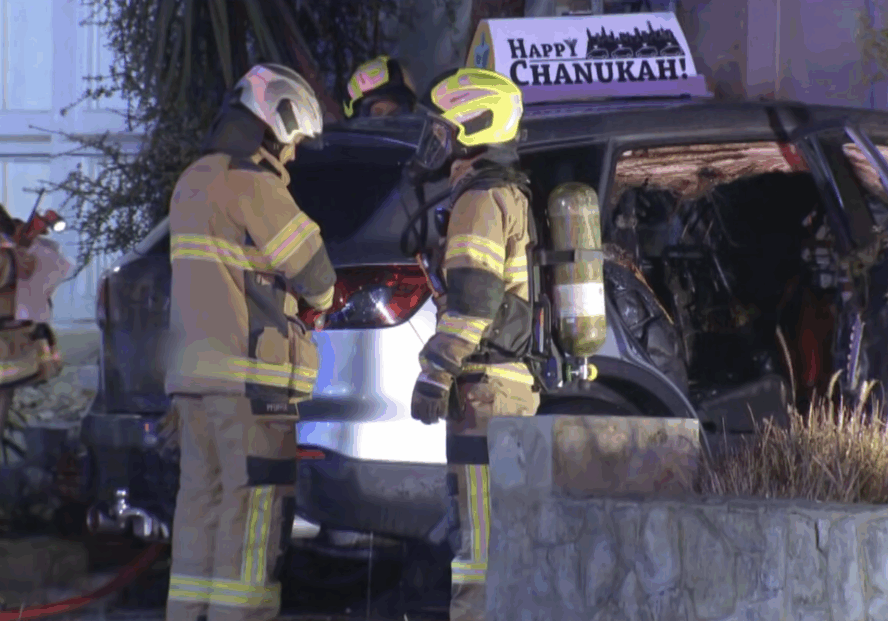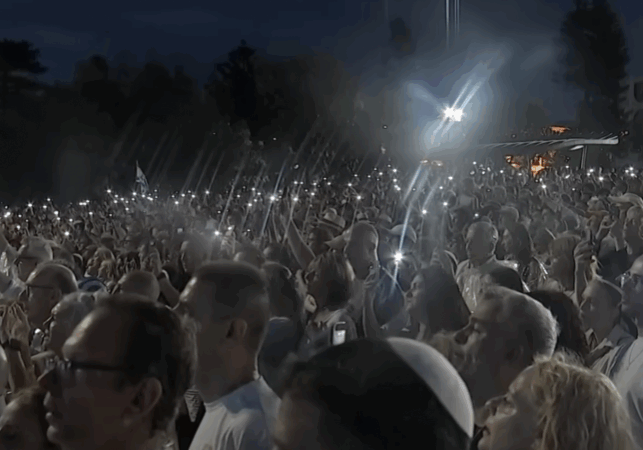Australia/Israel Review
The Hatred Files
Apr 1, 2005 | Jeremy Jones
Antisemitism in Australia 2004
By Jeremy Jones
In January 2004, a prominent Christian leader in Sydney invited Jews and Muslims involved in Interfaith Dialogue to observe a Church service before adjourning for the opportunity to engage informally with his congregation and with each other.
After having the opportunity to witness rituals of intense meaning, I joined the first group of guests escorted to the hall for the post-service function, chatting with Muslim and Christian young adults on the opportunities for dialogue in the coming year.
We waited for the second group to arrive, and when they did, after some delay, we learnt that a Jewish teenager in that group had been harassed, had his kippah ripped from his head and witnessed first-hand the lack of immediate, authoritative response from the congregants who were hosting him.
The day earlier, a Jewish student was in the process of accomplishing the mundane task of buying a textbook for her university course when a salesperson subjected her to an antisemitic tirade, prompted by the fact that the subject of the book was the Nazi genocide.
A few months later, the organiser of a Jewish community function in Melbourne was checking the text messages on his telephone, and amongst the social chit-chat found anonymous, aggressive antisemitic abuse.
As the year continued, Jewish Australians repeatedly reported abuse and harassment as they walked to and from synagogue, suffered from insults and threats via email, were recipients of obscene and aggressive faxes, letters and mail-drops, and witnessed vandalism of communal property and daubings of repulsive graffiti.
In the first week of January 2004 alone, the Executive Council of Australian Jewry’s database received reports of two assaults, one incident of face-to-face harassment, two mailed bundles of antisemitic material, a man emailing a long extract from the anti-Jewish “Warrant for Genocide”, the Protocols of the Learned Elders of Zion and other antisemitic emails, as well as one incredible incident where a person or persons unknown used weed-killer to burn swastikas and the words “Kill Jews” into the lawn of Tasmania’s Parliament House.
By the end of 2004, the tally was 25 reports of assault and property damage, 47 of face-to-face harassment, 14 telephone threats, 33 examples of threatening and/or abusive hate-mail, 45 graffiti attacks and 261 other incidents, including email, posters, leaflets and stickers, all of which qualified as “racist violence” under the definition used by this country’s Human Rights and Equal Opportunity Commission.
The total of all incidents, 425, was the third highest on record and although lower than the previous year not nearly low enough to bring any feeling of relief to the Jewish community or satisfaction to those working towards an Australia in which instances of racism and antisemitism become so rare as to be remarkable.
The type of assault on person and liberties Jewish Australians experienced at the hands of other Australians during 2004, in addition to the examples above, included:
- Graffiti including the words “Fuck Jews” daubed on the premises of a Jewish youth group;
- Attack on a small group of Jewish men, following antisemitic abuse, by a larger group who assaulted one Jewish man with a bottle and one perpetrator bit the victim in his chest, in a Sydney park;
- A Jewish man repeatedly taunted as “Jew-boy” by a person who observed his Star of David jewellery;
- A courier making a delivery to a Jewish day school shouted “All Jews here! All Jews here” and “I wish I had a bomb in this car to blow up the school!”
- A person called out “Let’s get the rabbi!” then threw a firecracker at the door of the home of an Orthodox Jewish family;
- Graffiti reading “Kill All Jews” was daubed, in excrement, on the entrance of a Jewish organisation’s office in Melbourne;
- Parents dropping children at a Jewish kindergarten in Sydney were confronted with graffiti reading “SS”, “Hitler Lives”, “Jews die” and “kids should die”;
- Swastikas were painted on the front pillars of a historic Tasmanian synagogue, for the first time in its more than 150 years of operation;
- Antisemitic stickers were placed on telegraph poles in Central Australia;
- Emails addressed “Hey Jewgirl” justifying the Holocaust and threatening the sender would “ruin” the “kosher-fest”, ending “Heil Hitler”, sent widely on the eve of the Jewish New Year.
- A caller to a Jewish organisation began by greeting “you filthy Jews”; and
- A letter stating Jews are “inhuman” and “animals” received at a Jewish communal office.
There were also reports of an incendiary device being set off outside a synagogue, bomb threats, antisemitic letter drops and numerous examples of harassment and assault of Jewish people going to or departing from religious services.
It is instructive to look at the totals of incidents over a period of fifteen years, for a comparison of the volume and type of incidents of intimidation, harassment and assault experienced by the Jewish Community.
In the three years 1990-1992, there were 469 reports. For 1993-1995, the total rose to 679 reports. In 1996-1998, 899 reports were received, and from 1999-2001, 953. The total for 2002-2004 rose to 1553.
If the incidents of harassment, assault, vandalism and abuse were the extent of antisemitic manifestations in Australia, it would constitute enough of a problem to justify serious concern, but the reality is that these incidents occurred in a context of sub-culture of antisemitic ideologies, organisations and individuals and against a back-drop of far too much tolerance of antisemitism in the mainstream media.
Antisemitic Incidents in Australia: 1990-2004 |
 |
Coverage of issues relating to the Australian Jewish community by the mainstream media is extensive and out of all proportion to the community’s size, but this is not due to antisemitism.
There are no overtly antisemitic radio stations, newspapers or television broadcasters with any general audience – but on too many occasions anti-Jewish commentary was given a mainstream platform.
Whether it was a direct comparison between “what the Nazis did and what Israel is doing”, the claim Jews persecuted early Christians and “if post-Holocaust history has taught us anything, it is that the persecuted can very easily become the persecutors themselves”, the statement “while some of the Jews are manipulating world opinion by harping on about the past others are busy building walls and taking pot shots at Palestinian children,” the publication of a cartoon depicting “Uncle Sam” with stars of David on his hat, a submission that “I wonder whether the Israeli lobby is becoming too strong for Australia’s democratic health”, the allegation “the extraordinary degree of Jewish influence” in Australia “has been wielded to the detriment of the nation as a whole”, or the printing of a political cartoon with an overtly anti-Jewish caricature of Ariel Sharon, a lack of judgement of editors empowered antisemites.
Lack of decency was even more evident with internet bulletin boards associated with mainstream media, where examples of published material included a web columnist writing that “the fundamentalist Zionist lobby controls politics and the media in the US and Australia”, a reference to the “primitive Talmudic pig like Sharon” and a link from a television website to racists’ Australian Nationalist Database
While Jews do not appear to be a major pre-occupation for the Muslim community within Australia, this was another segment from which a number of concerns arose during 2004.
These included the publication in Salam, the magazine of the Federation of Australian Muslim Students and Youth, of articles on the “false delusions” of “the Jews” who allegedly use all ” efforts to obstruct the message of Islam” and on “the inevitability of the Islamic Solution”; the sale of “The Protocols of the Elders of Zion”, an Islamic bookshop in Sydney; and an antisemitic campaign run by extremist Muslims in Sydney and Melbourne as part of attempts to raise funds for a new mosque.
In no cases were these actions supported by the recognised leaders of Australia’s Muslim community.
Occasional concerns also arose from other non-English speaking communities, but there was little real evidence that these came from individuals who spoke for any constituency of size.
In fact, much of the anti-Jewish propaganda in the mainstream media, or for that matter on the more universally accessible World Wide Web, could be sourced to individuals acting alone or as part of small fringe groups with no identifiable bases of support.
That does not mean that the antisemitism which infected the body of Australian life during 2004 is no less a concern, but it should mean that, with enough principled, political and moral response to it, we can keep antisemitism in the gutters in which it belongs.
In the early part of 2004, both Houses of Federal Parliament and the legislatures of NSW and Victoria adopted, unanimously, powerful and unambiguous condemnations of antisemitism.
The parliamentarians expressed “unequivocal condemnation” of antisemitism and branded “all manifestations” of antisemitism in Australia as threats to “the freedom that all citizens should enjoy equally”.
It was also significant that, due to concern at the potential for antisemitism to be incited by Mel Gibson’s The Passion of the Christ, a number of prominent church leaders also made forthright statements criticising antisemites and antisemitism.
Sadly, the two matters which were the subject of complaints under the Federal Racial Hatred Act from the Jewish community’s peak body in 2004 were against a self-described “Bible Believer” and the rump of a political party, One Nation.
Religious and political leaders, unfortunately, will continue to need to be vigilant and at the forefront of fighting antisemitism in the years to come.
![]()
Tags: Antisemitism





